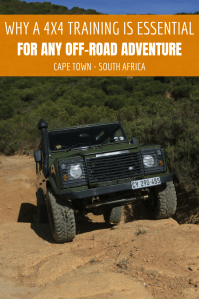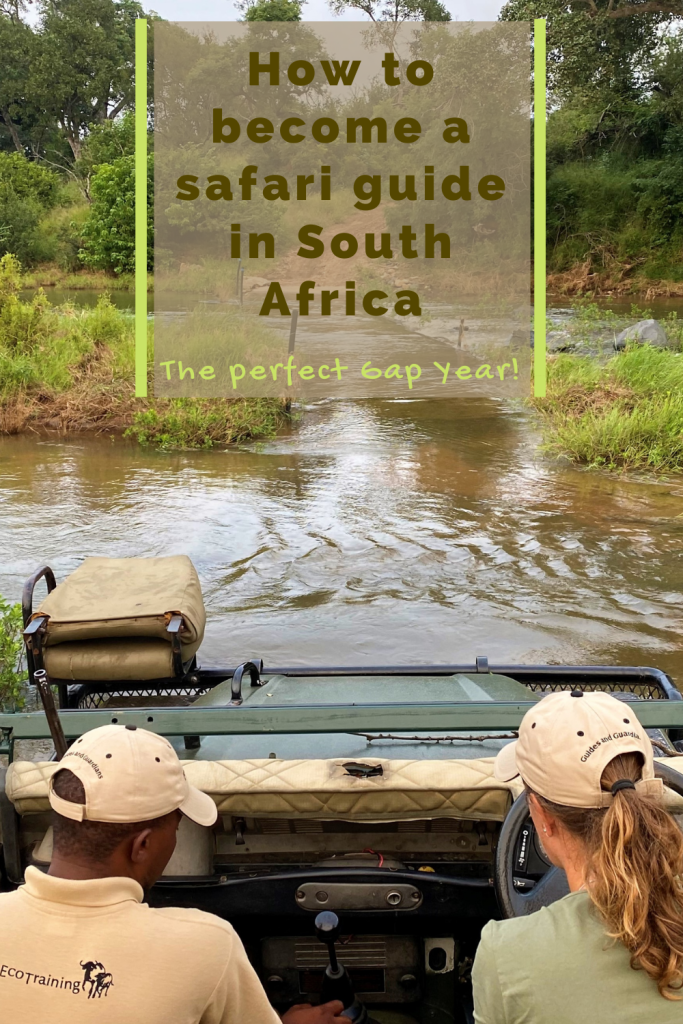Text & Photographs: Claire Lessiau & Marcella van Alphen
With its extensive deserts, rocky mountain passes, dense rainforests, and savannahs teeming with wildlife, the African continent is the last frontier for many overlanding enthusiasts. However, owning or renting a 4×4, even the latest and best-graded model, is clearly not sufficient, and many get stranded! Amidst the appeal of endless exploration of some of world’s most remote corners, it is crucial to recognize that completing these off-road journeys will be done safely and with success only with proper hands-on 4×4 training.
Pin it for later!
Introduction to 4×4 Mastery: let’s get rollin’, keep it cool, lock the diff & choose the right line!
It is early morning when Peet Hendriks rolls in on the dirt tracks of the Melkbos 4×4 centre, a stone’s throw away from Cape Town, in his classic Land Rover Defender. Engineer and experienced off-roader, Peet is a TETA (Transport Education & Training Authority) accredited 4×4 trainer who set up 4×4 Offroad Academy to serve novices as well as experienced off-road aficionados.


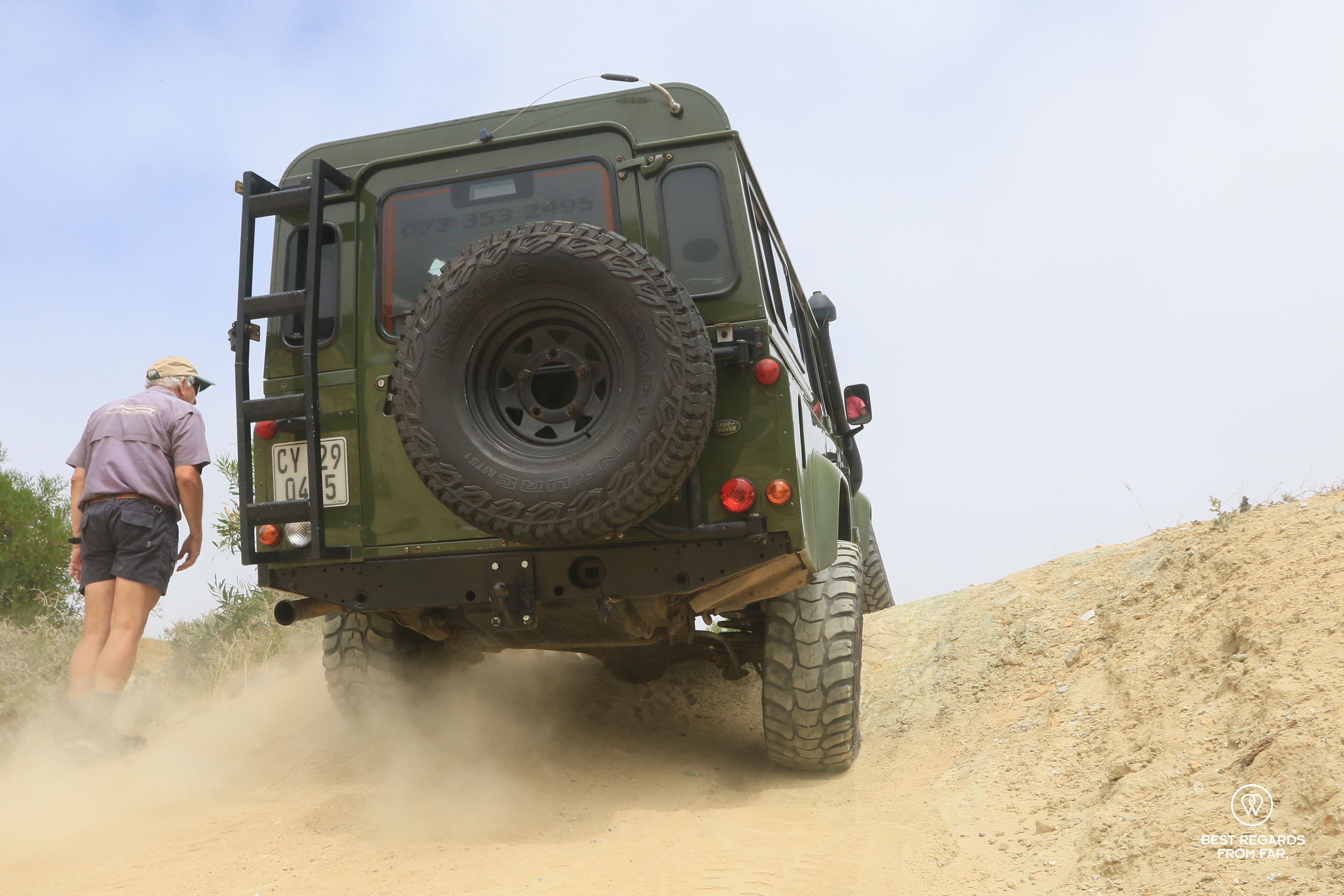

Today, an array of 4×4 from permanent ones such as his own Land Rover, an all set up Land Cruiser, or Toyota Hilux pick up truck, as well as a Suzuki Jimny are parked, their drivers eager to drive them on the difficult dirt tracks designed specifically to test the limit of the vehicles and maybe even more so of the drivers themselves. However, before jumping behind the steering wheel, and tackling the sandy, rocky, or muddy challenging tracks, there are some essentials Peet is eager to cover.
Let’s get rollin’: Tyres
Starting with the contact between the vehicle and the terrain seems quite logical, and the sun is already high-up in the African sky when Peet crouches besides his beloved Land Rover. Looking closely at his tyre markings, he enthusiastically deciphers its age and type.
Standing up, Peet passes around the weathered cross-section of an old tyre while he explains more about the way they are are manufactured. Visibly, rugged terrain accelerates wear and tear. Before embarking on any off-road expedition, knowing which type of terrain the vehicle will have to conquer is essential to, first of all, select the right type of tyres (be it all-terrain, mud, or highway).


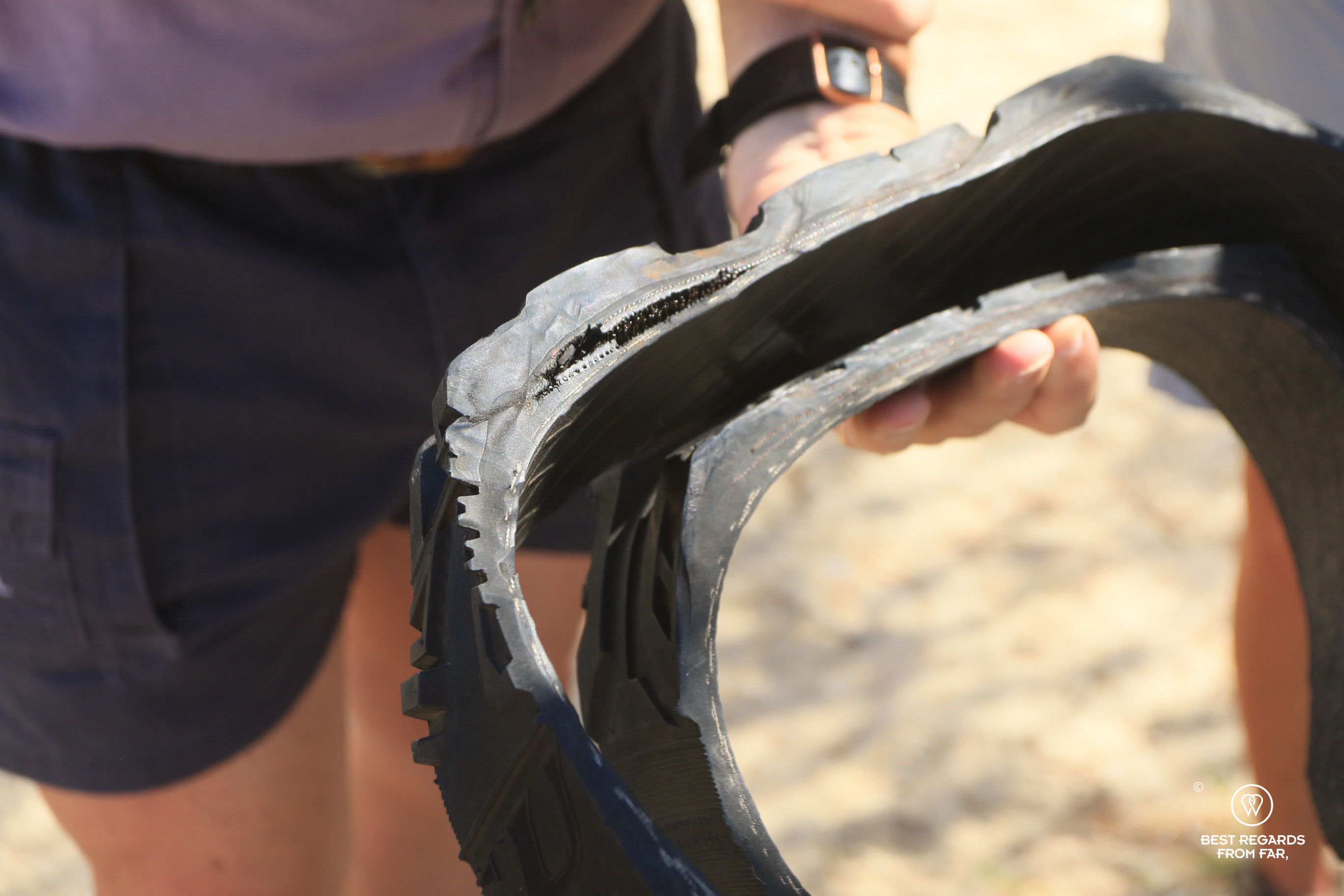
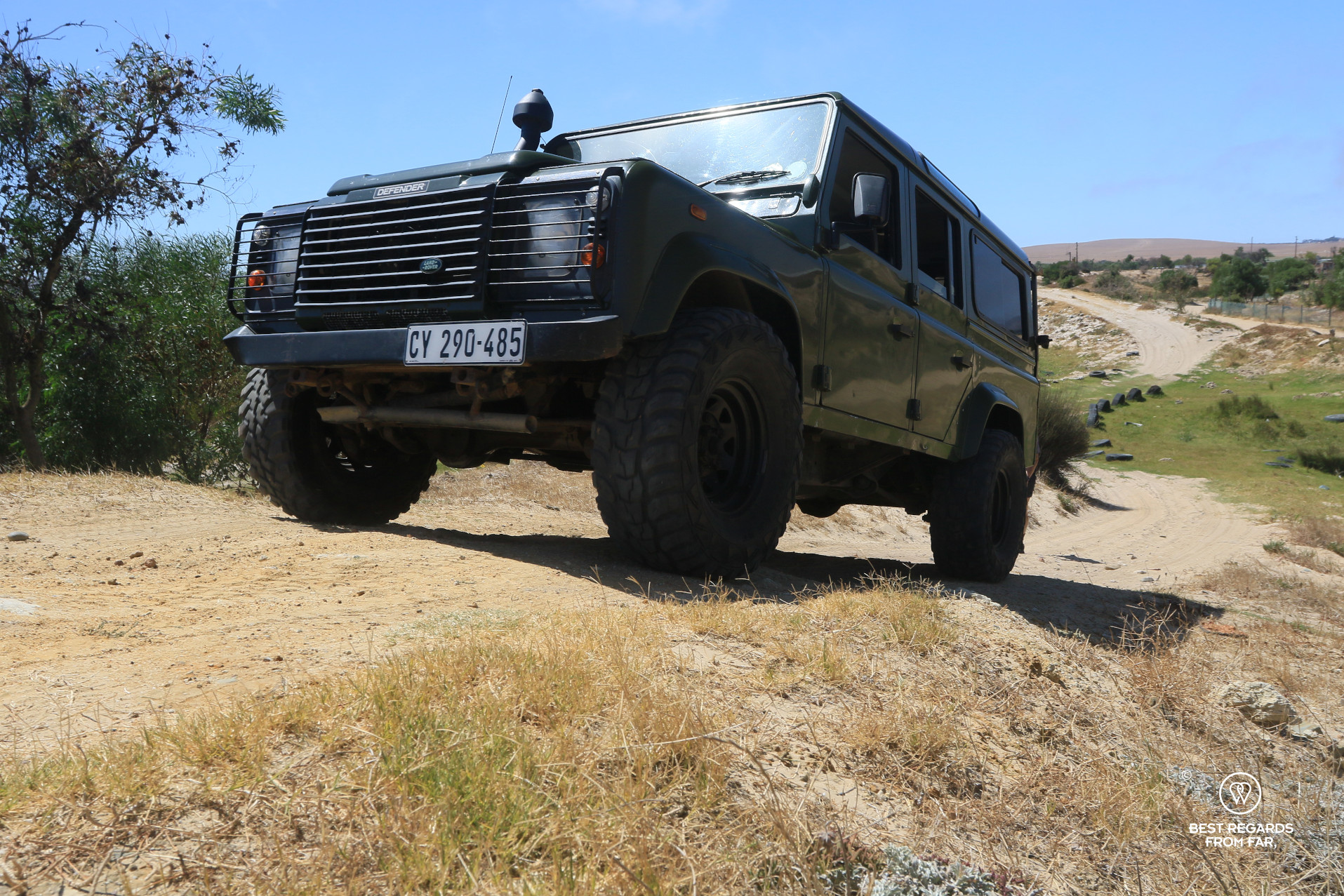
Adjusting their pressure is also key to gain traction. For optimal traction on gravel, the first type of tracks to conquer today on this introductory training, Peet lowers the tyre pressure to 1.8 bar to minimize the risk of punctures and blowouts. Yet, he warns his focused trainees about the risk of the tyre coming off the rim, rim damage, and slow leaks if the pressure is too low or the speed too high as he distributes small deflators to all.
Ventilation is key: let’s keep it cool!
Another aspect that has led many vehicles to be stranded on the side of dirt track is engine cooling. “Cooling is absolutely crucial”, exclaims Peet when he pulls out a large net from the back of his Land Rover.


Especially under the African sun during those slow off-road drives in low range where airflow is minimum, the ventilator has to work hard to prevent the engine from overheating. Yet its air intake can easily get blocked by vegetation on off-roads, and take in seeds that block the internal airstream. Installing the net on the hood, Peet demonstrates how this basic yet essential piece of equipment prevents the engine from overheating and potentially fatal engine damage putting an immediate to the off-roading adventure.
Unlock your full 4×4 potential with the diff lock.
For all trainees here, the 4×4 training started back home, reading the manual of their vehicle, as well as 4×4 Offroad Academy’s extensive theoretical manual. As Peet holds the manual of his own Land Rover, he insists on the specificities of every vehicle, him who seems to know them all as well as his own!
Whether driving a permanent four-wheel-drive (4WD) or not, no introductory training is complete without understanding the usage of the differential, casually called “diff lock”.





With his engineering background, Peet explains the mechanics behind it all making it easily understandable. In the case of a permanent 4WD vehicle like a Land Rover or Land Cruiser that are seen the most in the outback in southern Africa, the transfer case includes low range and high range options that are to be used in very specific situations, as the low range provides more torque to either pull heavy loads or get the vehicle out of some serious off-roading obstacles. Sometimes essential to conquer chaotic terrains, yet it comes with gear and speed restrictions to avoid fatal mechanical breakage.
Choose the right line.
With a slight apprehension realizing the extent of mechanical damage that can occur when inappropriately handling any 4×4, it is now time to put the theory to practice by navigating an obstacle parkour. Still, it is not time yet to jump behind the steering wheel! The first reckon is done on foot, calculating the best possible line and also closely inspecting the ground looking out for pointy rocks that could potentially pierce the tyres.




Peet explains how to manoeuvre the steep sections, advices on which gear to use, gives tips about how to use momentum and how to keep the speed low for a safe descent. Prior scouting of the terrain proves crucial as the visibility is null for the driver once behind the steering wheel rounding off a steep climb: teamwork between pilot and co-pilot with a set of clear hand signals is critical. In a coordinated approach, the Land Rover Defender effortlessly conquers the tricky terrain, demonstrating the immediate benefits of the acquired knowledge.
Peet keenly observes his trainees: a Toyota Hilux navigates the rocky slope with ease and a fully equipped Toyota Land Cruiser makes its way up the parkour. In low range with diff lock engaged, it all seems fairly easy. A compact Suzuki Jimny struggles as it is deprived of the magic diff lock. Manoeuvrable and light, by following Peet’s additional instructions, the compact vehicle makes it up the tricky slope too.
Sand Dune Training: it’s all a question of line & momentum!
Whether for the sand tracks of Botswana, the endless desert landscapes of Namibia, the sand roads of Mozambique, or the far South African corner of Kosi Bay, sand driving is essential for most southern African adventure. Despite what some may think, the appropriate tyre pressure is probably more pertinent than driving a state-of-the-art 4×4…
The tyres of Peet’s Land Rover Defender are being deflated by the scenic Atlantis Dunes near Cape Town, an ideal location for the sand driving training. This time, the pressure is dropped all the way down to 0.8 bar to ensure the much-needed traction by increasing the contact area of the tyre with the sand.



Navigating the rippling waves of sand dunes requires another unique set of skills for off-roaders: mastering momentum. Finding the appropriate speed without engaging diff lock to be able to maintain traction while going fast enough to not get blocked by the soft sand is a tricky balancing exercise that requires practice. Plus, the exercise keeps getting more complicated as the temperature goes up: with the sun heating up the sand, its consistency changes and it becomes softer and softer, being more challenging to drive. Each and every of Peet’s advice is essential to keep going: avoiding sharp turns (to prevent the tyres from digging into the sand or coming off the rim) and using gradual steering instead, maintaining a steady pace in 2nd or 3rd gear to stay on track, and as always, studying the line…

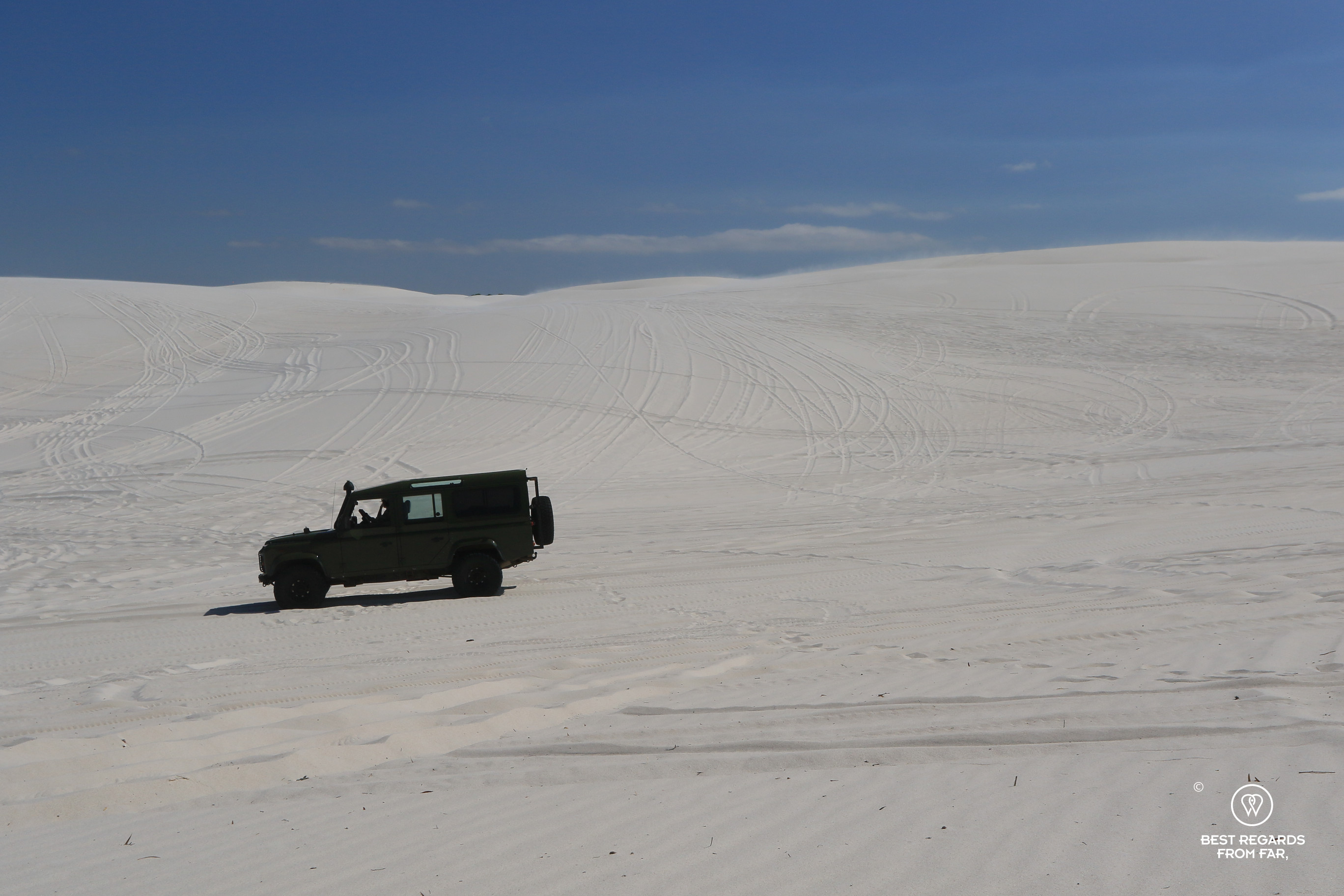
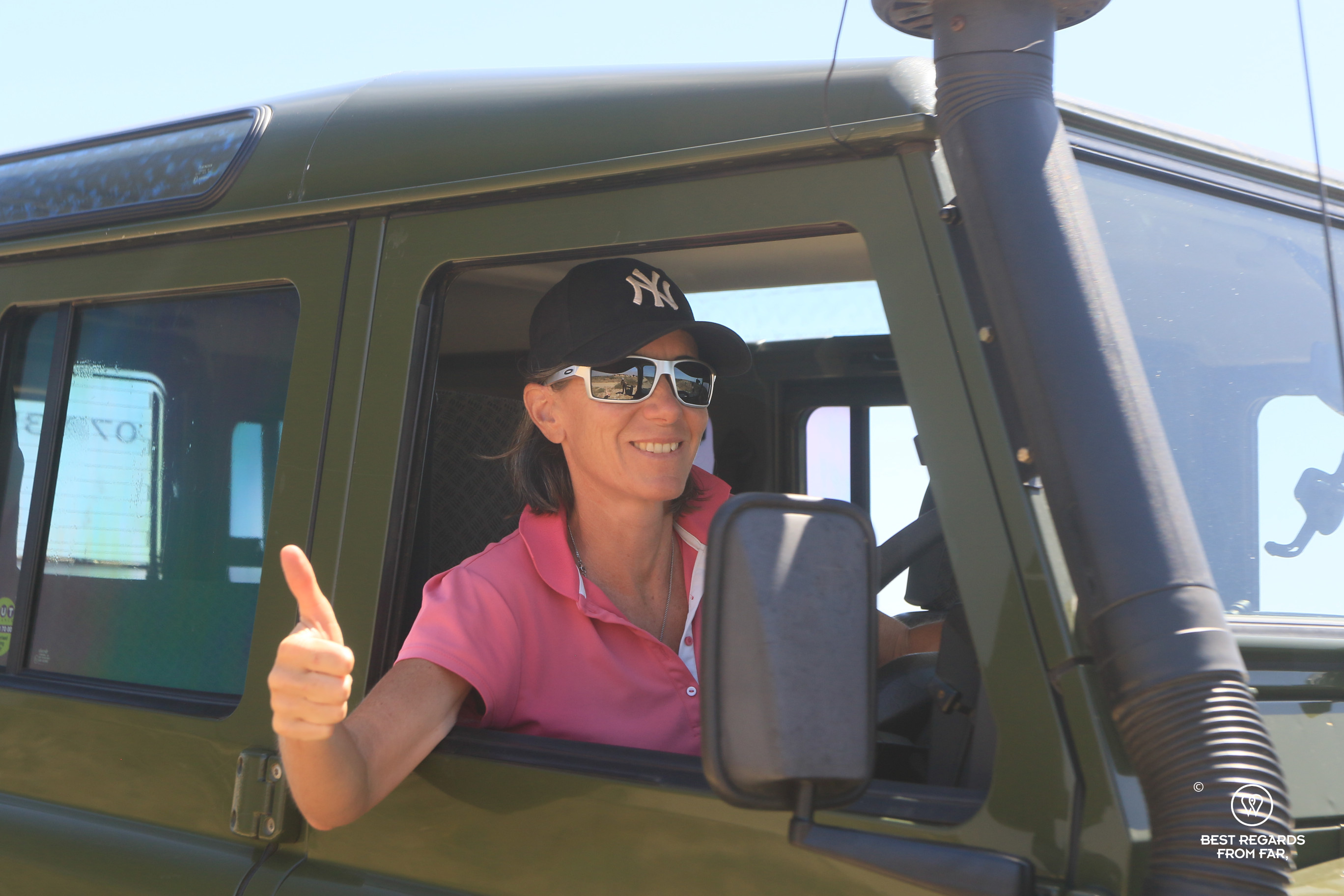
Peet’s tips prove to be excellent as the Land Rover makes it up the steep and soft dune with ease. As soon as the Defender crawls onto the top, he instructs to slow down and turn the car to descend. Again, scouting is key. By working with gravity rather than against it – a lost battle anyway – engaging in low gear and without braking, the downward slope is negotiated safely, minimizing the risk of accidents or vehicle damages.
Vehicle Recovery Training
Despite these trainings and experience, one can always get stuck or come across other vehicles that need assistance. This makes a vehicle recovery training essential especially when venturing into challenging terrain. Peet demonstrates different recovery techniques with snatch straps, a high-lift jack, shackles, and tow ropes. With his expert guidance put in practice, drivers gain confidence in their ability to handle recovery situations efficiently, and use dangerous high-pressure equipment and heavy-load handling tools safely, ensuring a safe and enjoyable off-road experience.




***
If initially, driving a 4×4 provides a sense of safety, it is only by attending a 4×4 hands-on training that the extent of potential danger is fully understood – or by unfortunately skipping on it and getting stranded or worse. Understanding the risks and how to navigate them makes these journeys where the tracks less travelled become the ultimate destinations fun and safe for many come backs to explore some more of Earth’s most remote corners.
Travel tips:
- 4×4 Offroad Academy provides training at all levels from theoretical to a wide array of practical trainings on all sorts of terrain. It is an essential way to start your off-roading adventure or to refresh your skills.
- The 4×4 training is meant to be followed with your own vehicle. In case you are planning to rent one, plan for a few extra days for the training.
- Check out our interactive map for more in the area (black pins lead to an article):
For more in Cape Town and South African 4×4 adventures, click on these images:
